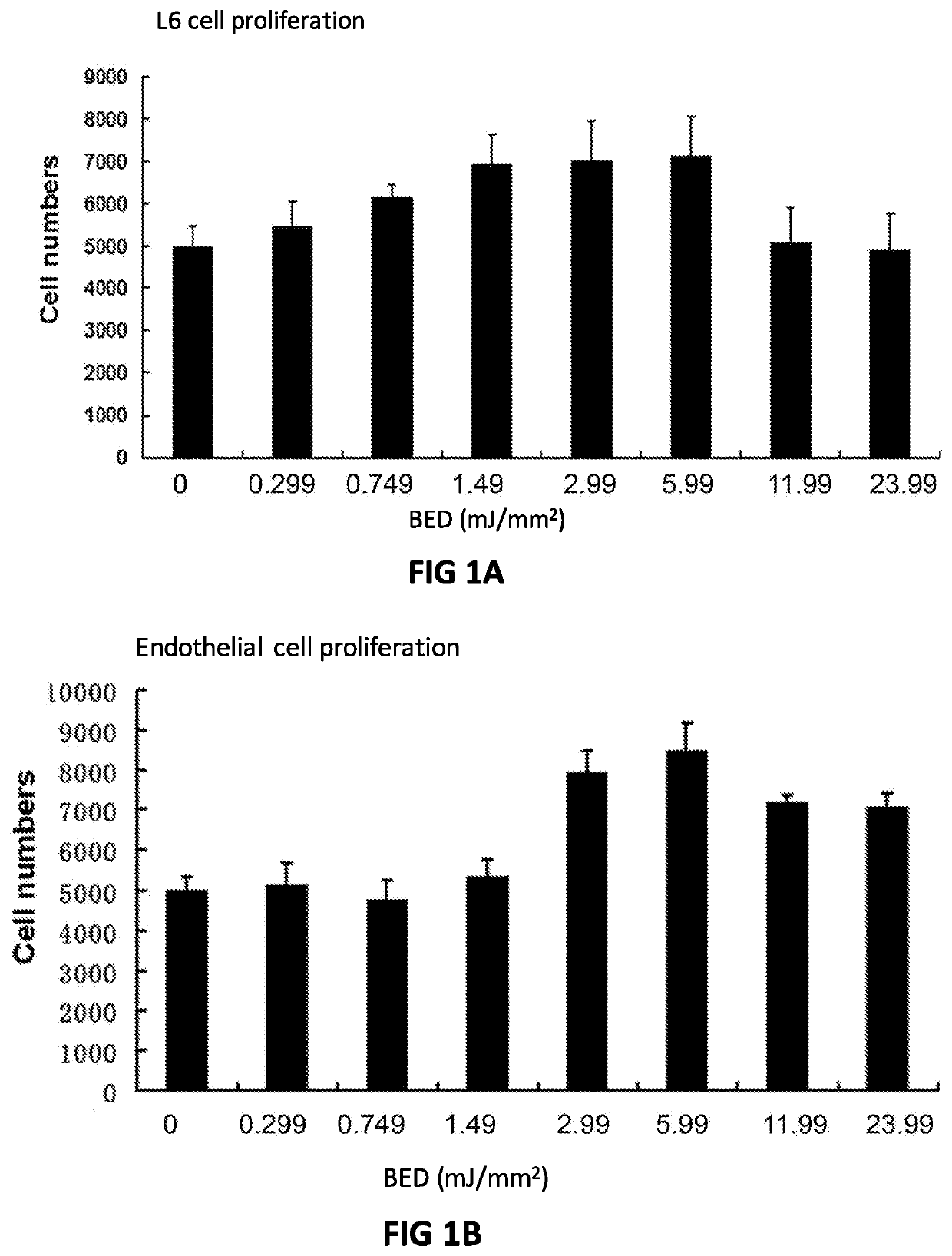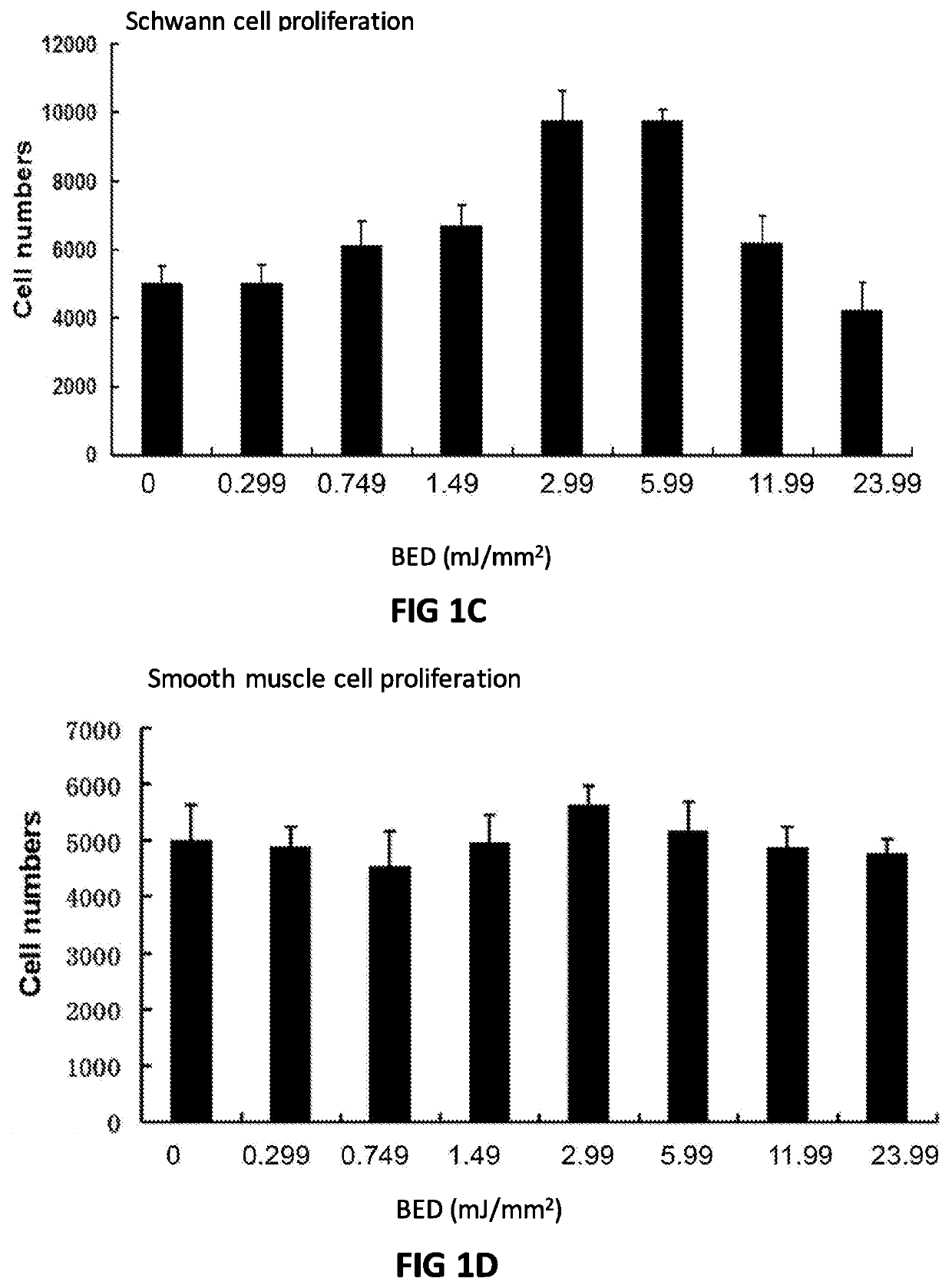Optimal Dosages for Low Energy Shock Wave Treatment of Vital Organs
a technology dosage, applied in the field of optimal dosage of low energy shock wave treatment of vital organs, can solve the problems of potential destructive power, cell and tissue damage, serious irreversible damage to kidneys,
- Summary
- Abstract
- Description
- Claims
- Application Information
AI Technical Summary
Benefits of technology
Problems solved by technology
Method used
Image
Examples
example 1
Generator Calibration
[0109]Two shockwave generators were calibrated. The first was an MTS DERMAGOLD™ system, by MTS Medical, Germany (hereafter, “the Dermagold instrument”). The second machine was an ESWT shockwave system, by Lite-Med (Taiwan) (hereafter, “the Lite-Med instrument”). The Lite-Med machine was modified by replacing the converging acoustic lens with a lens that emitted shockwaves nearly parallel to the central axis.
[0110]Both machines were calibrated to determine the spatial distribution of energy density emitted along the central axis of the emitter and orthogonal to this axis. These calibrations were used to determine how much shockwave energy was applied to each target tissue or cell based on the location of the target relative to the emitter.
[0111]The methodology for measuring the energy density at points various distances from the emitter was as follows:[0112]A hole was cut in the side of a 7 gallon tank that exactly fit the diameter of the water cushion on the sho...
example 2
ure Experiments
[0116]LESW treatments comprising varying dosages were administered to cultured cells. Energy flux density (EFD), number of pulses, and frequency were varied.
[0117]In order to determine the biological effects of varying LESW dosages, four cell lines were selected, representative of the cell types common to all organs and tissues. Myoblast L6 cells were selected as model cells representative of progenitor cells. Rat Schwann cell RT4 cells were chosen as representative Schwan cells which are essential in maintaining nerve integrity and function. Human endothelium HUVEC cells were selected as representative of endothelial cells which line the inner surface of a blood vessel. Rat urethral smooth muscle cell (RUSMC) cells were selected as model cells representative of smooth muscle cells which are present in all blood vessels except the capillaries.
[0118]The biological effects of LESW have been studied by many researchers and the following effects have been determined in va...
example 3
udies
[0126]Additional experiments were conducted on 120 rats in order to assess harmful effects of LESW at varying dosage parameters. Targeted organs were treated with LESW's with the Lite-Med instrument at varying EFD settings (0.07 and 0.26 mJ / mm2), for varying numbers of pulses (50, 150, 226, 452, 905, 1357, and 1809), at two different frequencies (1 and 3 Hz). Due to the small size of the rats, relative to the size of the shockwave emitter, the administered dosage was assumed to be the received dosage.
[0127]Forty eight hours after treatment, rats were sacrificed and dissected to isolate tissue samples from the brain, liver, spleen, pancreas, kidney, skin and subcutaneous tissue, and skeletal muscle.
[0128]Hemorrhage was selected as a first indicator of harmful LESW dosage. The incidence and severity of micro-hemorrhage was assessed by hematoxylin and eosin staining in sections of target tissues. In brief, the tissue was fixed with 2% formaldehyde and 0.002% picric acid in 0.1 M p...
PUM
 Login to View More
Login to View More Abstract
Description
Claims
Application Information
 Login to View More
Login to View More - R&D
- Intellectual Property
- Life Sciences
- Materials
- Tech Scout
- Unparalleled Data Quality
- Higher Quality Content
- 60% Fewer Hallucinations
Browse by: Latest US Patents, China's latest patents, Technical Efficacy Thesaurus, Application Domain, Technology Topic, Popular Technical Reports.
© 2025 PatSnap. All rights reserved.Legal|Privacy policy|Modern Slavery Act Transparency Statement|Sitemap|About US| Contact US: help@patsnap.com



